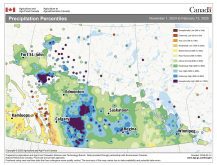Oat growers just can’t seem to catch a break when it comes to selling their crops.
Sure, they have been growing great crops, but that’s led to heavy stocks and continual weak prices.
“It could be 24 months where we struggle with averaging (cash prices of $2.75-$3.25 per bushel) in Manitoba,” Randy Strychar of oatinformation.com told the Manitoba Oat Growers Association.
“If you’re looking for $3.50 in Manitoba, I don’t think you’re going to see it.”
Western Canada’s oat acreage has been shifting westward from its traditional Manitoba-eastern Saskatchewan base for years, under assault from crops such as soybeans and corn.
Read Also

Biofuel sector happy with federal budget
Advanced Biofuels Canada says new Biofuel Production Incentive is a lifeline until CFR amendments are in place.
It has faced problems with demand as the horse feed market weakened but seen continual strength in the human food markets, especially with its health claim advantage and its inclusion in the breakfast bars that have replaced cereal for many consumers.
Oats’ long-term market potential also looks good because Chinese consumers are gobbling up more of the crop, which is relatively new to its middle class. The country buys mostly Australian oats because of issues between China and Canada, but the long-term potential is great, Strychar said.
However, North American prices have been flat and uninspiring for growers, offering a relatively poor profitability outlook in recent springs.
How can oats hold on to its acres with forecast prices continuing to offer little?
“I don’t think you do.… I don’t think we can,” Strychar said.
“I think we’re going to end up with a downturn, and we’re going to end up with some problems.”
For farmers committed to oats and considering when to lock in some prices, Strychar noted that the oat market tends to rise into early spring and then settle back.
“Your best opportunities are now probably prior to seeding, probably no later than the end of March,” said Strychar.
Chicago’s oat futures contract continues to suffer low volume and much volatility, but the trade and processors use it, so it’s still a functional pricing tool, Strychar said. The contract makes up about 80 percent of the price that farmers see, with basis representing the rest.
Oats’ weakening hold on western Canadian acres has seen it sliding toward special crop status, with contracting playing a bigger role. Strychar expects that to continue.
However, he doesn’t expect to see the crop disappear from Manitoba, despite its losses in eastern Manitoba in recent years.
“We’re probably seeing the bottom of it,” said Strychar, predicting that demand growth and a need for the specific characteristics of Manitoba oats will drive better returns for farmers.
Manitoba oats appear to produce better beta glucan and other healthy characteristics in the crop because of varieties and soil, so that should result at some point in incentives for eastern prairie growers to stick with the crop.















